Killer's Kiss (1955)
Directed by: Stanley Kubrick
Written by: Howard Sackler, Stanley Kubrick
Starring: Frank Silvera, Irene Kane, Jamie Smith, Jerry Jarrett
USA
AVAILABLE ON BLU-RAY NOW, from ARROW VIDEO as a Special Feature in their Blu-ray of The Killing
RUNNING TIME: 69 min
REVIEWED BY: Dr Lenera, Official HCF Critic
Davey Gordon is a professional boxer whose early promise was shattered by a glass jaw and is now at the end of his career. Living opposite his one-room apartment is Gloria Price, a taxi driver who moonlights as a dance partner in a joint owned by her gangster boss Vincent Rapallo, with whom she is having an affair. After losing his latest fight, Davey is awakened from his slumber by screams coming from Gloria’s apartment. As he looks across the courtyard, he sees that Gloria is being attacked by Vincent, and he rushes to her aid…
Killer’s Kiss was Stanley Kubrick’s second film, his first being the war drama Fear And Desire which was virtually unseen until very recently, and it’s fair to say that it’s quite a rough and uneven picture, but it’s also a very interesting one, and I’ve always been intensely fond of it. Kubrick uses a simple story that is basically just a rag-bag of elements from film noir, and tells it in as stylish and clever a way as possible with the limited means at his disposal, while the whole thing has a gloomy romanticism which is very compelling, and which doesn’t really turn up in any of Kubrick’s other films. The film seems to disappoint many, and it may very well be Kubrick’s weakest film, but then the man was a genius and would go on to make great movie after great movie. I reckon if Killer’s Kiss had been made by somebody else, it would have a much greater reputation, but then part of the fun of watching it is seeing much of Kubrick’s filmmaking style already formed, and I think it seems more impressive if you’re aware of the circumstances in which it was made.
Originally titled The Nymph And The Maniac and Kiss Me Kill Me, it was made on a tiny budget, much of it borrowed from Kubrick’s uncle, and was shot guerrilla-style, the camera often hidden in a van, because they had no permits to film in New York. It was an eventful shoot, from the camera being stolen, to having to temporarily move five vagrants from an alley to shoot a scene, to a truck driver constantly blocking Irene Kane the female lead from walking to where she needed to until she agreed to go for a drink with him, to Kubrick firing his soundman because the shadows caused by his microphone intruded into his lighting schemes. He ended up post-dubbing the entire picture. Kane was unavailable to add her dialogue, so radio actress Peggy Lobbin voiced her role. United Artists made Kubrick change the ending to a happier one and the censors required some cuts to sexual and violent content. The film made a small amount of money for the studio, who then put up much of the money for The Killing. I actually first came across Killer’s Kiss in another film, Stranger’s Kiss from 1983, which is a somewhat fictionalised but interesting account of its making. It’s worth seeing, though sadly seems to be one of those pictures that is almost impossible to see. Maybe a future edition of Killer’s Kiss may contain it, because it would be an interesting exercise watching one film after the other.
Killer’s Kiss begins with a man pacing up and down on a railway platform, smoking cigarettes, waiting for a girl who may or may not show up. He begins to tell his story, and we flash back, but every now and again we return to the man on the platform. What we are really watching at first is a tentative, even sweet, love story with an element of darkness in it. As Davey prepares for his next fight, he sees, but virtually ignores the pretty woman undressing in the apartment opposite. His mind is on his fight. They leave their rooms at the same time and go out to work without any acknowledgement of each other. You get the sense that this has happened a lot. Later on, after Davey’s disastrous fight, at first the roles are reversed and she’s the one who sees him, and he’s topless. When he sees her again, it’s reflected in his mirror in one of many extraordinary shots in the picture. The perhaps Rear Window-inspired cuteness is constantly interrupted though. Gloria has a boyfriend, her gangster boss. She doesn’t seem bothered by being kissed by him in the first scene of them together, but he clearly has a nasty streak. He gets his men to beat up one of her dance partners, then, after a row with Gloria, tries to rape her. It’s lucky that Davey is there to rescue her, but their romance is dangerous, because Vincent just won’t let go.
The film proceeds at a leisurely pace. Sometimes it seems that Kubrick, who also wrote [and edited and photographed] the film, is struggling to pad his slender tale out, though he does it with great style and economy, most notably a flashback for Gloria, telling her background to Davey, where all we see is her dead sister [played by Kubrick’s first wife] performing as a ballerina. It’s strange but it works. A brief dream scene, lasting but all of a few seconds, simply uses the negative image of some city shots. There’s a simply wonderful rooftop chase, filmed mostly in long shots, yet more exciting than many of the similar scenes you get today in films where it’s all close-ups and quick cutting. And then there’s a climactic fight in a room full of female mannequins [foreshadowing A Clockwork Orange maybe?] that is superbly clumsy and believable, yet still thrilling. Then again, even the early boxing fight beats most of the movie boxing scenes out there, brilliantly using lots of low angles and even a POV shot when Davey is knocked down. There is already so much genius in this picture – just look at the skilful use of shadows to help conceal the low budget – and so many of the things we associate with Kubrick’s style, from deep focus photography to photographing characters from both sides of the stage line. Yet the often clandestine location shooting gives some of the film considerable immediacy, and it’s hard to imagine Kubrick, who became such a control freak, ever making a film this way.
The script is often careless and slapdash, Killer’s Kiss definitely being one of those films where more care was taken with the cinematography than the story [I haven’t yet mentioned the sun dipping behind the city skyline as a train races along at the bottom of the screen, so simple, but so meticulous and so evocative…in fact every other shot in this film seems to be interesting], but it does pay some attention to character. There’s a great moment where Vincent, the villain of the piece, stands in his shadowed office, making up his mind to commit some malice. His eyes fall on family photographs that he takes the trouble to keep there, and when his mind is made up, he gestures guiltily, as if knowing he’s letting them down and is trying to dismiss their silent reproaches. But then again, is he the main villain? Watching Killer’s Kiss for the first time in over a decade, I found that this time around, I wasn’t ‘sure’ about Gloria. When you watch the film, just look at the way she brings Vincent ‘around’ after Davey has been beaten up. It seems rather too convincing. This ties in somewhat to the ending, which seems so obviously changed. I personally feel Killer’s Kiss works better if you stop it about half a minute before the end, with the man still waiting. The simple poetry seems broken by the added ending.
The performances are generally mediocre, with only Frank Silvera’s somewhat pitiful bad guy making a real impression. Gerald Fried’s score is mostly comprised of Latin American rhythms or a rather overused, though appropriately melancholic, love theme not actually written by him. Killer’s Kiss has its awkwardness, but you can almost feel Kubrick doing all he can to make it as visually interesting as possible, and stretching his meagre budget as far as it can go. It’s a highly underrated and unappreciated film which many Kubrick fans seem all too eager to dismiss because it’s so imperfect and compromised, but it has great things in it, plus a soulfulness which is rather touching. The version of Killer’s Kiss included in Arrow Video’s Region B Blu-ray set of The Killing looks astonishingly good for such a cheap film and really brings out the astonishing cinematography.

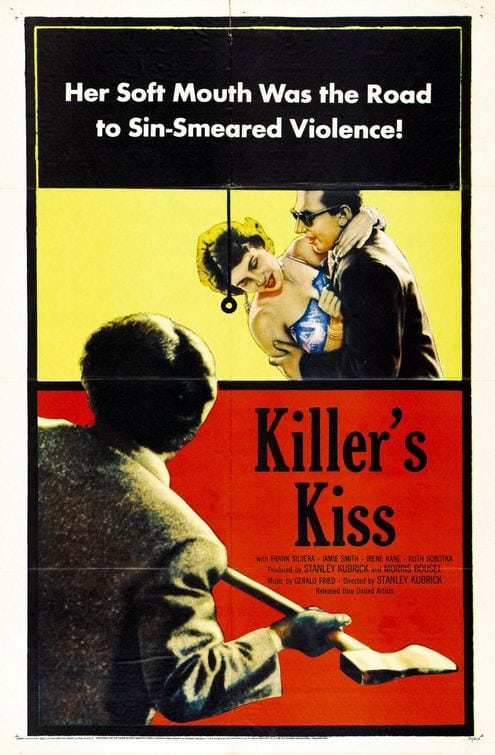
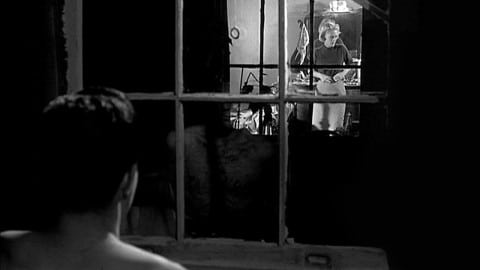
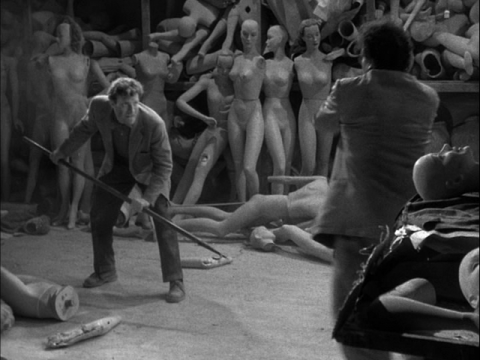



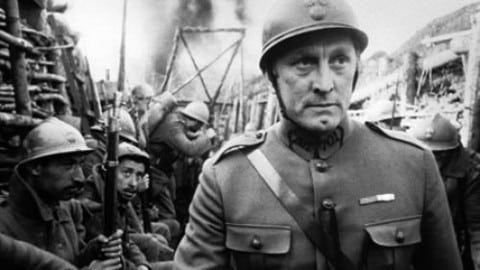

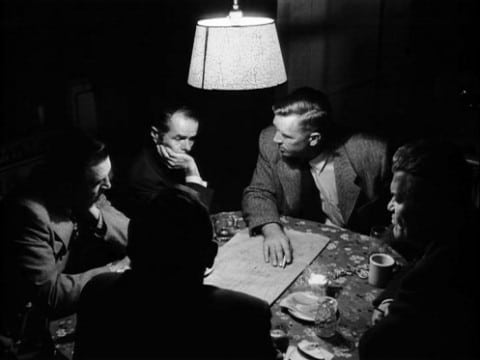
Be the first to comment